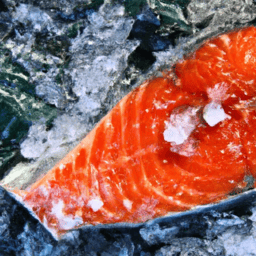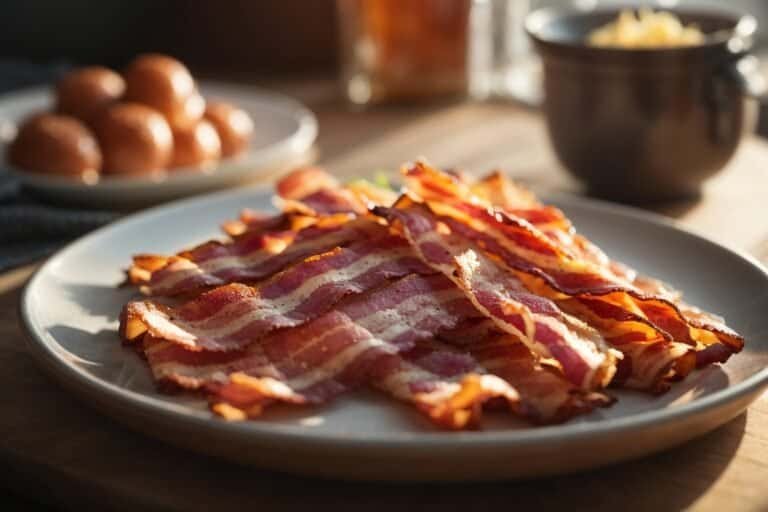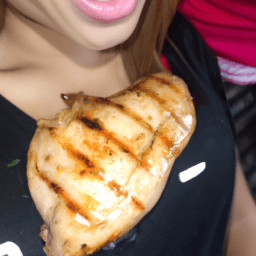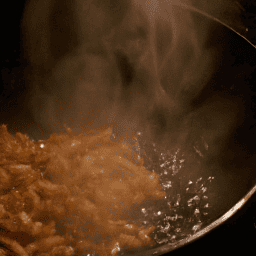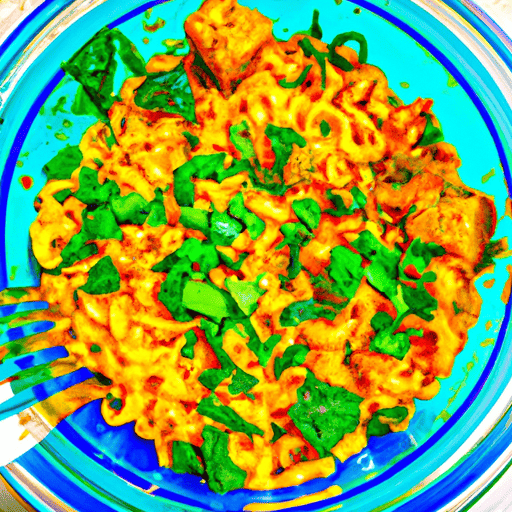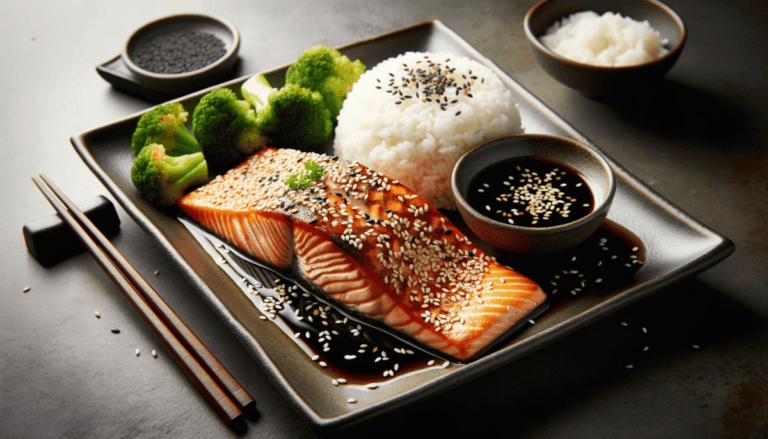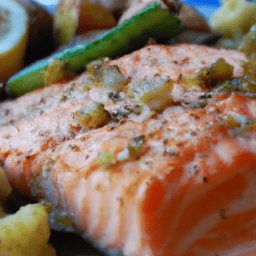How To Cook Frozen Salmon
So you’ve got a frozen piece of salmon sitting in your freezer and you’re wondering how to transform it into a delicious meal? Look no further, because this article is here to guide you through the process of cooking frozen salmon with ease. Whether you’re a seasoned chef or a cooking novice, we’ve got you covered with simple yet effective techniques that will help you achieve perfectly cooked salmon every time. From defrosting to seasoning, we’ll walk you through all the necessary steps to ensure a mouthwatering dish that is sure to impress even the toughest of culinary critics. So grab your apron and let’s get cooking!
Understanding The Right Type of Salmon
Salmon is a popular and versatile fish that can be prepared in various ways, from baking to grilling to pan-frying. However, before diving into the different cooking techniques, it is important to understand the distinction between wild and farmed salmon.
Identifying Between Wild and Farmed Salmon
Wild salmon is exactly what its name suggests – it is caught in the wild, usually in rivers or in the open ocean. The taste of wild salmon is often described as rich and robust, with a firm texture. On the other hand, farmed salmon is raised in controlled environments such as fish farms. This type of salmon tends to have a milder flavor and softer texture.
When it comes to choosing between the two, personal preference plays a significant role. Wild salmon enthusiasts appreciate the natural taste and texture of the fish, while others prefer the convenience and affordability of farmed salmon. It’s worth noting that farmed salmon is more readily available throughout the year than its wild counterpart.
Importance of Knowing About the Source
Knowing the source of your salmon is crucial for several reasons. Firstly, it allows you to make informed decisions about the sustainability and environmental impact of your seafood choices. Opting for sustainably sourced salmon helps preserve fish populations and reduce the strain on ecosystems.
Additionally, being aware of the source of your salmon can provide insights into the quality and safety of the fish. Fish that are caught or farmed in clean waters and properly handled and processed are more likely to be of higher quality.
Determining the Quality of Frozen Salmon
Frozen salmon is a convenient option that allows you to enjoy this delectable fish at any time, even when it’s out of season. However, not all frozen salmon is created equal. Determining the quality of frozen salmon is essential to ensure a satisfying culinary experience.
Look for frozen salmon that is individually vacuum-sealed. This packaging method helps maintain the freshness and flavor of the fish while preventing freezer burn. Additionally, check for any signs of freezer burn, such as discoloration or dehydration, which indicate poor quality.
Proper Thawing of Frozen Salmon
Thawing frozen salmon properly is crucial to ensure even cooking and to maintain the best possible texture and flavor. There are several methods you can use to thaw your salmon safely.
In the Refrigerator Thawing
Thawing salmon in the refrigerator is the slowest but safest method. Simply place the frozen salmon fillets or steaks on a plate or tray and allow them to thaw in the refrigerator overnight or for about 24 hours. This gradual thawing process helps preserve the texture and flavor of the fish.
Cold Water Thawing
If you need to thaw your salmon more quickly, you can opt for the cold water thawing method. Place the frozen salmon in airtight packaging, ensuring it is securely sealed, and submerge it in cold water. Change the water every 30 minutes to prevent the temperature from rising too much. This method usually takes about 1 to 3 hours, depending on the size of the fish.
Microwave Thawing
Microwave thawing is the quickest method, but it requires caution and close monitoring. Some microwaves have a defrost function specifically designed for thawing frozen food. Use this function or set the microwave to a low power level and defrost the salmon in short intervals, checking frequently to ensure it doesn’t start cooking.
Preparation Before Cooking
Properly preparing your salmon before cooking is essential to enhance its natural flavors and ensure a delicious outcome. Here are some key considerations for preparation.
Seasoning Choices for Salmon
Salmon has a natural richness that pairs well with a wide variety of seasonings. Popular options include dill, lemon, garlic, and various herbs and spices like paprika or cayenne pepper. When seasoning salmon, be generous with the flavors but avoid overpowering the fish’s delicate taste.
Marinating the Salmon
Marinating salmon can add an extra layer of flavor and help tenderize the fish. To marinate, place the salmon fillets or steaks in a shallow dish and cover them with your chosen marinade. Let the fish marinate in the refrigerator for at least 30 minutes or up to 24 hours before cooking.
Preparation of the Cooking Pan
Choosing the right type of pan for cooking salmon is crucial to ensure even heat distribution and prevent sticking. Non-stick pans or stainless steel pans are excellent options. Before cooking, preheat the pan over medium-high heat and add a small amount of oil or butter to prevent the fish from sticking.
Technique 1: Oven Baked Salmon
Oven baking is a reliable and fuss-free method for cooking frozen salmon. It allows for even cooking and preserves the natural moisture and flavors of the fish.
Preheating the Oven
Preheating the oven is an essential step to ensure consistent cooking. Set the oven to 400°F (200°C) and allow it to preheat for about 10 to 15 minutes before placing the salmon in the oven.
Cooking Time for Baked Salmon
The cooking time for baked salmon depends on the thickness of the fillets or steaks. As a general guideline, cook salmon for about 12 to 15 minutes per inch of thickness. The fish should easily flake with a fork and have an internal temperature of 145°F (63°C) when fully cooked.
Baked Salmon Recipes
There are countless delicious recipes for oven-baked salmon. From herb-crusted salmon to maple-glazed salmon, the options are endless. Experiment with different seasonings and toppings to find your favorite combination.
Technique 2: Grilled Frozen Salmon
Grilling is a popular cooking method that imparts a smoky and slightly charred flavor to the salmon. While fresh salmon is commonly used for grilling, frozen salmon can also be grilled to perfection.
How to Grill Salmon Properly
To grill frozen salmon, start by preheating the grill to medium-high heat, around 400°F (200°C). Remove the frozen salmon from its packaging and lightly oil both sides to prevent sticking. Place the salmon on the grill, skin-side down, and close the lid. Cook for about 5 to 8 minutes per side, depending on the thickness of the fish.
Ideal Grill Temperature
Maintaining an ideal grill temperature is crucial for achieving the perfect grilled salmon. Cooking at medium-high heat ensures that the salmon cooks through without drying out or becoming overly charred.
Accessories Needed for Grilling
When grilling salmon, having the right accessories can make the process smoother. A fish spatula or wide metal spatula is helpful for flipping the salmon without breaking it. Additionally, using a grill basket or foil packet can prevent the delicate fish from falling apart and sticking to the grill grates.
Technique 3: Pan Fried Salmon
Pan frying is a quick and straightforward method for cooking frozen salmon. It yields a crispy exterior and a moist, tender interior.
Choosing the Right Type of Pan
A non-stick skillet or a well-seasoned cast iron skillet works best for pan frying salmon. The non-stick surface prevents the fish from sticking, while cast iron retains and distributes heat evenly for a perfect sear.
Cooking Temperature
For pan frying salmon, preheat the skillet over medium heat and add a small amount of oil or butter. Once the oil is hot, carefully place the salmon in the pan, skin-side down, and cook for about 4 to 5 minutes. Flip the salmon and continue cooking for an additional 4 to 5 minutes, or until it reaches an internal temperature of 145°F (63°C).
Cooking Time
The cooking time for pan-fried salmon varies depending on the thickness of the fillets or steaks. As a general rule, aim for about 4 to 5 minutes per side for every inch of thickness. The salmon should be golden brown on the outside and moist and flaky on the inside.
Technique 4: Poached Salmon
Poaching is a gentle and delicate cooking method that results in moist and tender salmon. It involves simmering the fish in a flavorful liquid, resulting in a mild and flavorful final product.
Ideal Poaching Liquids
When poaching salmon, consider using flavorful liquids to enhance the taste of the fish. Broth, wine, or a mixture of water and lemon juice are popular options. Additional seasonings such as herbs, spices, or aromatics can also be added to infuse more flavor into the poaching liquid.
Actual Poaching Process
To poach salmon, start by bringing the poaching liquid to a gentle simmer. Carefully place the salmon in the liquid, ensuring it is fully submerged. Cover the pot with a lid and let the salmon poach for about 10 to 15 minutes, or until it easily flakes apart with a fork.
Serve Suggestions for Poached Salmon
Poached salmon pairs well with various sauces and accompaniments. A creamy dill sauce, lemon caper sauce, or a simple drizzle of melted butter can complement the delicate flavor of the fish beautifully. Serve the poached salmon with a side of steamed vegetables or a fresh green salad for a complete and satisfying meal.
Technique 5: Steamed Salmon
Steaming is a gentle and healthy cooking method that preserves the natural flavor and texture of salmon. It is an excellent option for those seeking a lighter preparation.
Preparing a Steamer
To steam salmon, you will need a steamer or a improvised steaming setup. Place a heatproof dish or a steamer basket inside a pot filled with a small amount of water. Make sure the water level is below the steamer basket or dish but not touching it.
Steaming Time
When steaming salmon, the cooking time depends on the thickness of the fillets or steaks. As a general guideline, steam the salmon for about 6 to 10 minutes per inch of thickness. The fish should be opaque and easily flake with a fork.
Ideal Sauces and Garnishes for Steamed Salmon
Steamed salmon’s delicate flavor pairs well with light and tangy sauces. Citrus-based sauces, such as lemon herb sauce or a soy ginger glaze, add a refreshing touch to the dish. Fresh herbs, such as dill or parsley, make for beautiful and flavorful garnishes.
Common Mistakes to Avoid When Cooking Salmon
Even experienced cooks can make mistakes when preparing salmon. Here are some common mistakes to avoid to ensure a perfect result every time.
Overcooking the Salmon
Overcooking salmon is a common mistake that can lead to dry and tough fish. Be mindful of the cooking time and aim to remove the salmon from the heat when it is just cooked through and still moist.
Insufficient Seasoning
Salmon has a mild flavor, which means it benefits from generous seasoning. Don’t shy away from adding enough herbs, spices, or marinades to enhance the taste of the fish. Taste the seasoning before cooking to ensure it is well-balanced.
Improper Thawing
Thawing salmon improperly can negatively affect the texture and flavor of the fish. Avoid thawing salmon on the countertop at room temperature, as it can promote bacterial growth. Stick to safe thawing methods such as refrigerator thawing or cold water thawing.
Health Benefits of Salmon
In addition to its delicious taste, salmon offers numerous health benefits that make it a nutritious choice for any diet.
Nutrient Content
Salmon is packed with essential nutrients such as omega-3 fatty acids, high-quality protein, vitamin D, and B vitamins. These nutrients contribute to heart health, brain function, and overall well-being.
Role in Heart Health
The omega-3 fatty acids found in salmon have been shown to reduce the risk of heart disease by decreasing inflammation and lowering blood pressure and cholesterol levels. Including salmon in your diet regularly can help support a healthy heart.
Use in Weight Loss Diet
Salmon is a nutrient-dense food that is relatively low in calories and high in protein. Incorporating salmon into a balanced diet can help with weight loss and weight management, as it provides satiety and aids in the maintenance of lean body mass.
In conclusion, cooking frozen salmon doesn’t have to be complicated. By understanding the types of salmon, properly thawing the fish, and choosing the right cooking techniques, you can enjoy a delicious and nutritious meal. Whether you prefer the simplicity of oven baking or the smoky flavors of grilling, there are plenty of options to suit your taste buds. Remember to avoid common mistakes and experiment with various seasonings and sauces to create your own signature salmon dishes. Enjoy your culinary adventure with this versatile and delectable fish!

